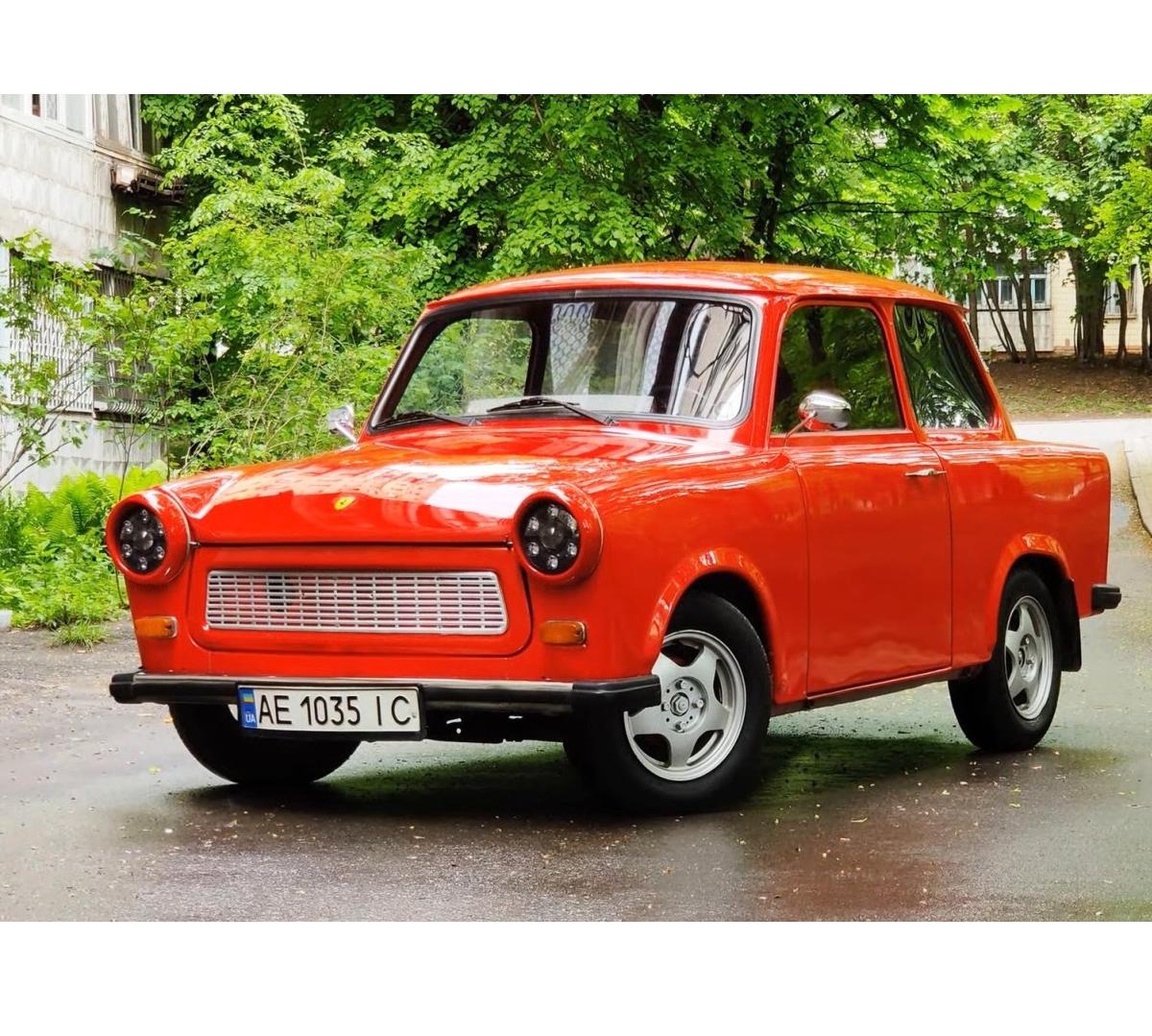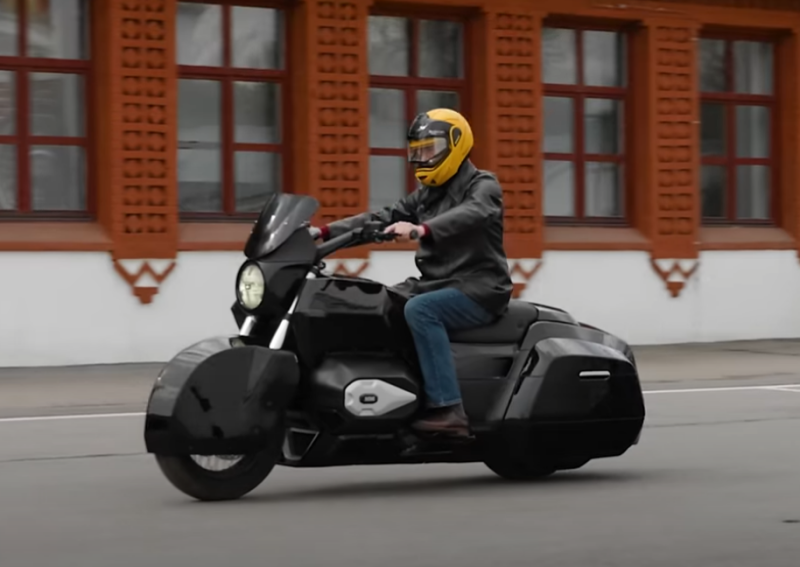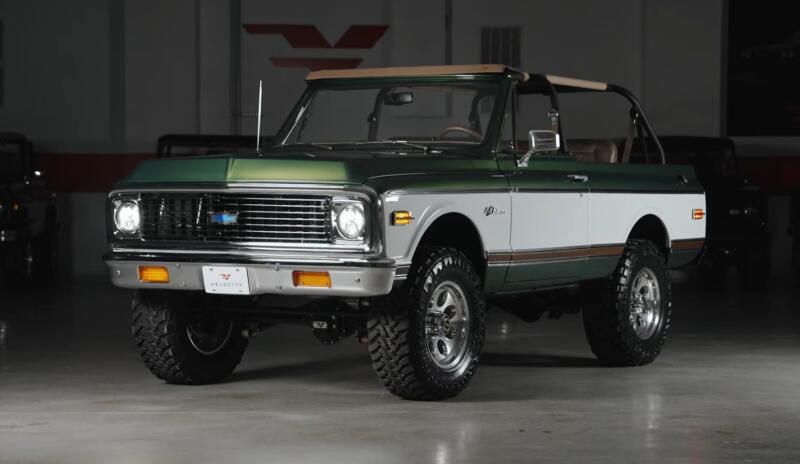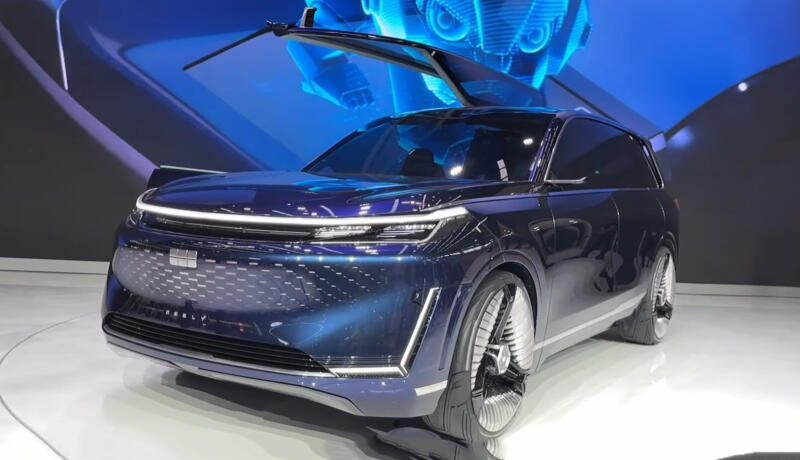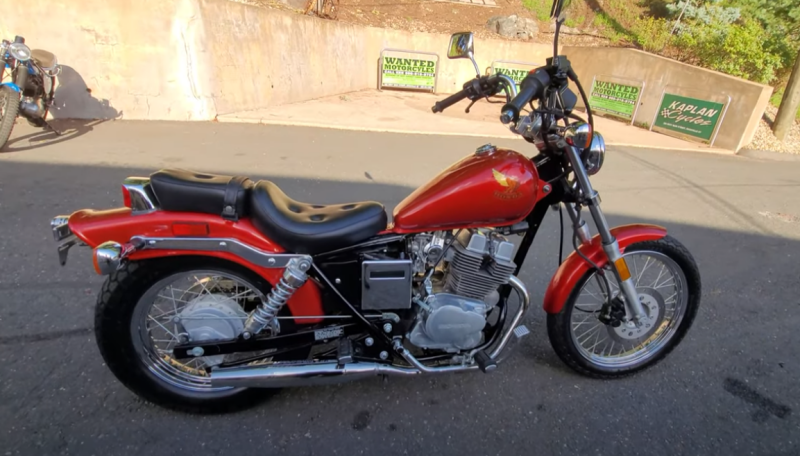The latter was not just a pompous phrase. Indeed, out of the 41 years of the existence of the German Democratic Republic, it spent only the first eight years without a Trabant car. In the future, they went hand in hand, and almost at the same time completed their history.
Background and direct ancestor of the Trabant
After the end of the war, the former Horch and Audi factories ended up in the Soviet occupation zone of Germany. This led to their merger and the creation of the IFA production association in 1948. A year later, the GDR appeared, which became the heiress of this automobile conglomerate.
 The recognizable silhouette of the car "Trabant". Photo: youtube.com
The recognizable silhouette of the car "Trabant". Photo: youtube.comSoon, the production of passenger cars was launched at the renovated enterprise. The first model was the IFA F8, which was an almost complete copy of the pre-war DKW. There is only one noticeable difference, which in the future played a crucial role. The bodies of new cars, as well as those of the DKW F8, were made of wood, sheathed with plywood and decorated with leatherette. In order to somehow strengthen such an unreliable structure, the wings and sides of the hood were made of rolled steel.
In the post-war period, there was a catastrophic shortage of metals, so we had to look for a non-standard solution. And by 1953 it was found. In this case, the saying worked very well: the need for inventions is cunning. East German designers contrived to invent a new material based on cotton waste mixed with phenol-formaldehyde resin. The know-how helped not only to avoid manufacturers' dependence on steel, but also to ensure the durability of the structure, while reducing the overall weight of the car. The material is called duroplast.
In the early 50s, the IFA F9 appeared with an all-metal body and more modern equipment. It became the first step towards the creation of Wartburg cars at the Eisenach plant in the future. By 1955, the mid-range Sachsenring P240 and subcompact AWZ P70 "Zwickau" appeared. The latter had a body partly made of Duroplast and a motorcycle engine with a displacement of 700 cc. see Many of his design developments and technological innovations became the basis for the first Trabant model that appeared two years later.
 Many people today are interested in driving a miniature car. Photo: youtube.com
Many people today are interested in driving a miniature car. Photo: youtube.comWhat do a small car from the GDR and the space program have in common?
In 1957, the USSR, which sought to "catch up and overtake America" in everything, was able to launch the first artificial Earth satellite into orbit. This happened on October 4, and the space structure received a simple, but with a hint, name - "Sputnik-1". Just 35 days later, the first mass-produced subcompact car of the new brand was produced in the GDR. Its name was timed to coincide with the grandiose event, confirming the unbreakable friendship with the Soviet state. The small car was named "Trabant" (which means "satellite").
This name was the winner of a competition held throughout the country. The new name took root very well, because, in addition to the main meaning, it could be interpreted as “accompanist” or “friend”. The miniature car really became a good friend and family member for many East Germans for many years.
In those days, there was still no modern globalization, when the bodies for different brands could be manufactured by the same plant. On the contrary, most often at the automobile enterprises of those times there was a principle of a full production cycle. Therefore, the silhouettes of the bodies of each brand had their own individual features, which made it possible to immediately identify it. "Trabant" was also from this number. Seeing, even from afar, this baby with an emblem in the form of a stylized Latin letter "S", you will not confuse him with anything else.
Models and modifications of different years
The first prototype of the new brand was the 70 P1955. It was a two-stroke, front-wheel drive small car, using a pre-war power unit. A small car with a Duroplast body was put into small-scale production. The minicar had several different body types:
classic 2-door sedan
combi station wagon
luxury coupe
Let's take a closer look at the latter. They were produced in a limited number - about 1500 pieces. The P70 coupe had a wood-steel frame and a plastic grille and fenders. The rest of the details were handmade. Steel was used to make them. As with other modifications, a 700 cc engine was installed. The next model of the plant was the Trabant P1957 introduced in 50.
The IFA association began to prepare a novelty for release, using the capacities of both former factories. So at Horch they started manufacturing the chassis, and at Audi they made the original body, which was then installed on it. The engine was a 2-stroke, slightly smaller volume (which could be easily determined by the digital index in the name), using air cooling.
The 500 cc unit produced 18 hp. s., and, after modernization, increased the figures by two units. Its maximum speed was approaching 95 km / h, and the equipment had three types:
standard
luxury (two-tone body)
deluxe (tricolor version)
The latest version did not last long. The choice of materials from which the body parts were made was influenced by two factors: the post-war shortage of metals and the trade embargo imposed on the GDR by the capitalist states. The Union was full of waste cotton fiber, and phenolic resin could be extracted from East German brown coal. These elements became the basis for the manufacture of a material that had already been used previously - Duroplast. It was from him that all the external parts of the Trabant P50 were made. So there was a famous legend about a car made of plastic.
 The original emblem of the brand. Photo: youtube.com
The original emblem of the brand. Photo: youtube.com5 years later, a new model was proposed - P60. She had an engine of larger volume and power (23 hp). Only the dashboard has undergone a change, but outwardly it was still the same baby. It entered the distribution network as the "Trabant 600" and was produced for 3 years, until 1964. However, starting from this model, the plant began to offer a variant of a car for summer holidays with a family, with a folding roof and sun loungers - Kombi Camping.
In the same year, the last version of the original Trabant was presented, the release of which continued until 1990. The front-wheel drive "Trabant-601" with a 500 cc, 23-horsepower engine was presented in two versions: a sedan (2 doors) and a station wagon (3 doors). After 4 years, the engine was boosted, and the power increased to 26 hp. With. In a modification designed for the disabled, a manual 3-speed gearbox was replaced with a semi-automatic.
In the late 80s, there was a strong warming of relations between the two Germanys, so it became possible to equip the car with a 1,1-liter engine from the Volkswagen Polo. He received an index of 1.1. Despite such a breakthrough, there is a strong opinion in the West that the Trabant is a long-obsolete technique. This was facilitated by the fact that the party elite of the GDR for many years slowed down the process of modernizing the car. As a result, most of the exports of the Trabant 1.1 model fell on Hungary. The model was the last for this brand.
 Subcompact station wagon. Photo: youtube.com
Subcompact station wagon. Photo: youtube.comStopping production and attempts at revival
In the early 90s, old "friends" could be found at car dumps, where old-timers of the GSVG contingent could buy a Trabant for ... 10 marks. Ride and just crash. After all, conscripts were not allowed to take cars home. Germany, which again became united, did not need such a technique. On April 30, 1991, the Trabant brand officially ceased to exist. During this time, it sent more than 3 million small cars to the roads of a now non-existent country (the lion's share fell on the 601 model), becoming the most massive automaker in the republic.
Today it is perceived as an object of nostalgia for the old days or as a way to stand out from the crowd. Therefore, attempts were made to revive. In 2009, an electric car appeared based on the once popular brand. It was presented at the IAA-2009 exhibition, but the new Trabant never entered the series.
 The latest modification "Trabant 1.1". Photo: youtube.com
The latest modification "Trabant 1.1". Photo: youtube.com Now the car is increasingly becoming a collector's item. Hollywood actor Tom Hanks purchased a premium sky blue 2014 for the Los Angeles Museum in 601. And the Czech traveler Dan Priban traveled almost all continents in a yellow Trabant. If you come to Germany at the present time, then there is a very great chance to see a small Trabant, because about 34 thousand of them still roam the country's roads.
